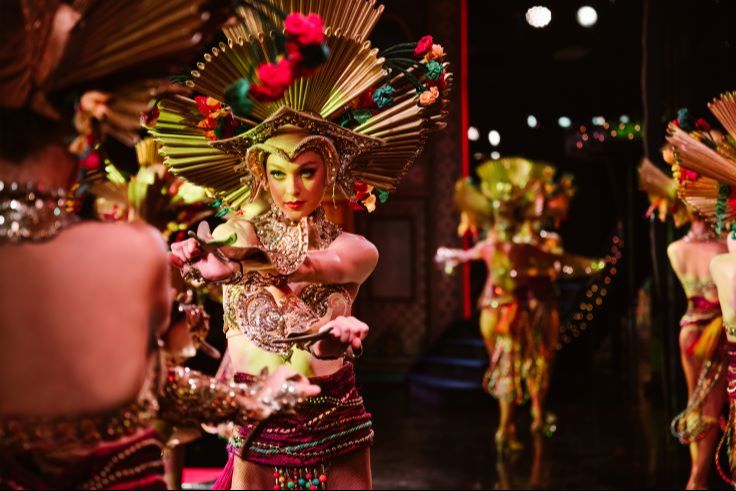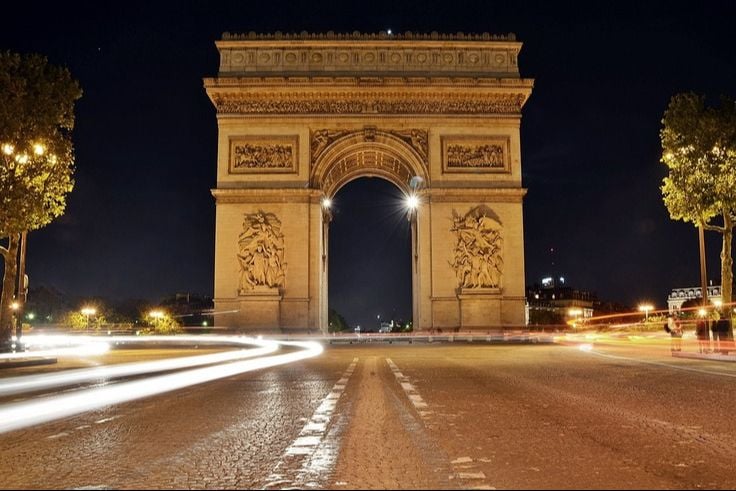History of the Moulin Rouge Cabaret
The Moulin Rouge went through several periods of transformation, from cabaret to theatre, and from cinema to music-hall with dancers popping out of cakes. The Moulin Rouge is a living legend that was built over the decades. Although it’s extremely well-known throughout the world, certain parts of its history remain less known to the public.
For more than 120 years, the Moulin Rouge has been one of the nerve centers of Montmartre. Here is a history of this Parisian institution that now welcomes nearly 600,000 visitors every year.

The First French Cancan Dancers
The Moulin Rouge was founded in 1889 by Joseph Oller (1839-1922) and Charles Zidler (1831-1897). Located at the bottom of a hill in the Montmartre neighborhood, it opened its doors on October 10. Its founders wanted to create a place dedicated to entertainment for a diverse public and the fact that it was located in Paris’s 18th district (a fashionable but still quite rural area at the time), allowed the cabaret to quickly acquire a solid reputation that would in turn inspire international artists like Henri de Toulouse-Lautrec and Auguste Renoir.
At the beginning, the Moulin Rouge would throw champagne-filled parties during which famous dancers performed. It was also during this time that the world famous quartet known as the French Cancan was born. The Moulin Rouge served drinks during shows, spectators sometimes themselves dancing on the dance floor that was installed to admire the performers up close. With an unconventional architectural style and extravagant decoration (including an elephant in the garden!), the Moulin Rouge was more than adept at attracting clients who simply wanted to have fun.

A successful theatre
Ten years after a disastrous fire in 1915 that would destroy the Moulin Rouge, the theatre was rebuilt. At the time, the actress-dancer-singer Mistinguet became Co-director of the cabaret, thus leaving her mark on its history. Star of the Revue Mistinguett (1925), she was also Director of the sewing shop. Her songs, « Ça, c’est Paris ! », « Il m’a vue nue » and « On m’suit », sung with Jean Gabin, are all inseparable from the Moulin Rouge.
When Mistinguett left the theatre, its 1,500 seats were turned into a dance club during the Second World War, a time when the Moulin Rouge was much less prosperous regardless of performances by Edith Piaf and Yves Montand in 1944.
A Renaissance
The Moulin Rouge underwent renovation in the 50s. In 1951, Georges France, proponent of the cabaret’s new look, and Vincent Auriol, former President of the French Republic, would inaugurate the new and improved cabaret. Indeed, France’s goal was to reclaim the cabaret’s soul, a place where people had a good time and could enjoy amazing shows performed by talented artists. The cabaret’s new life kicked off with a number that included Charles Trenet, Charles Aznavour, and Bourvil.
The Moulin Rouge Today
Shows called “revues,” or performances divided into several scenes that are watched while dining, don’t show any sign of stopping. Today, Féérie and the show’s 80 artists retrace the Moulin Rouge’s history night after night. An evening at the cabaret must be reserved in advance but you’ll realize it was worth the wait as soon as you step into its splendid room where so many amazing artists performed.


